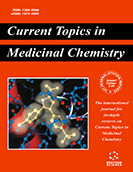Abstract
Cells rely on several transition metals to regulate a wide range of metabolic and signaling functions. The diversity and efficiency of their physiological functions are derived from atomic properties that are specific to transition metals, most notably an incomplete inner valence subshell. These properties impart upon these elements the ability to fluctuate among a variety of positively charged ionic forms, and a chemical flexibility that allows them to impose conformational changes upon the proteins to which they bind. By this means, transition metals can serve as the catalytic centers of enzymes for redox reactions including molecular oxygen and endogenous peroxides. This review addresses the consequences of the aberrant translocation of the redoxcapable essential transition elements, iron, copper, and manganese, upon the brain with an emphasis on uncontrolled and deleterious oxidative events. The potential of metal-protein interactions in facilitating such events, and their association with the physiologically redox-inert metals zinc and aluminum, are related to their postulated contribution to the pathology of neurodegeneration.
Current Topics in Medicinal Chemistry
Title: The Chemistry of Transition Metals in Relation to Their Potential Role in Neurodegenerative Processes
Volume: 1 Issue: 6
Author(s): Diem HaMai, Stephen C. Bondy, Angelica Becaria and Arezoo Campbell
Affiliation:
Abstract: Cells rely on several transition metals to regulate a wide range of metabolic and signaling functions. The diversity and efficiency of their physiological functions are derived from atomic properties that are specific to transition metals, most notably an incomplete inner valence subshell. These properties impart upon these elements the ability to fluctuate among a variety of positively charged ionic forms, and a chemical flexibility that allows them to impose conformational changes upon the proteins to which they bind. By this means, transition metals can serve as the catalytic centers of enzymes for redox reactions including molecular oxygen and endogenous peroxides. This review addresses the consequences of the aberrant translocation of the redoxcapable essential transition elements, iron, copper, and manganese, upon the brain with an emphasis on uncontrolled and deleterious oxidative events. The potential of metal-protein interactions in facilitating such events, and their association with the physiologically redox-inert metals zinc and aluminum, are related to their postulated contribution to the pathology of neurodegeneration.
Export Options
About this article
Cite this article as:
Diem HaMai , Stephen C. Bondy , Angelica Becaria and Arezoo Campbell , The Chemistry of Transition Metals in Relation to Their Potential Role in Neurodegenerative Processes, Current Topics in Medicinal Chemistry 2001; 1 (6) . https://dx.doi.org/10.2174/1568026013394796
| DOI https://dx.doi.org/10.2174/1568026013394796 |
Print ISSN 1568-0266 |
| Publisher Name Bentham Science Publisher |
Online ISSN 1873-4294 |
 3
3
- Author Guidelines
- Bentham Author Support Services (BASS)
- Graphical Abstracts
- Fabricating and Stating False Information
- Research Misconduct
- Post Publication Discussions and Corrections
- Publishing Ethics and Rectitude
- Increase Visibility of Your Article
- Archiving Policies
- Peer Review Workflow
- Order Your Article Before Print
- Promote Your Article
- Manuscript Transfer Facility
- Editorial Policies
- Allegations from Whistleblowers
- Announcements


























